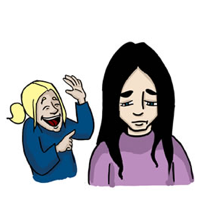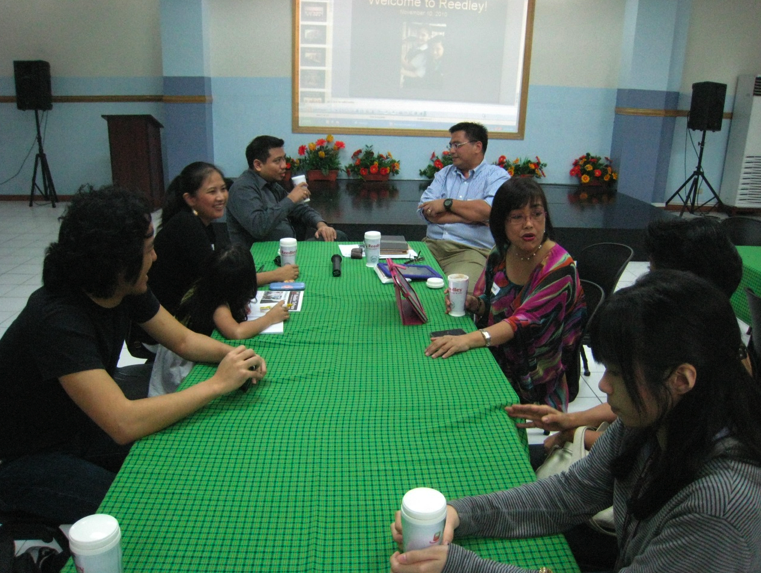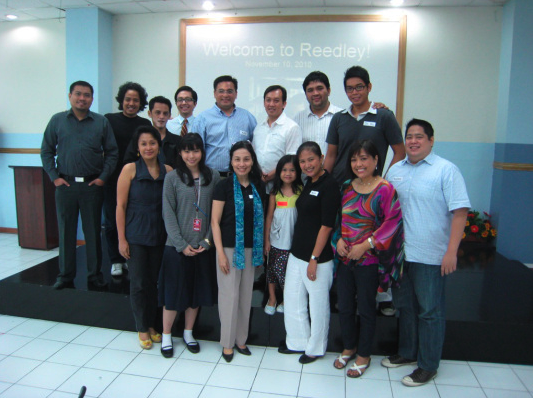 My kids were not spared from child bullying in school. It was almost never physical. For my daughter, it consisted of snide remarks, teasing, name-calling, being ignored. For my son, the manifestations were more visible. There was one instance when he was “playfully punched” in the tummy by a classmate who teased him no end. And he’d return from recess with his pencils broken in half or find things missing from his desk. It came to the point where I had to make a special request for the bully boy not to be sectioned with my son the next school year.
My kids were not spared from child bullying in school. It was almost never physical. For my daughter, it consisted of snide remarks, teasing, name-calling, being ignored. For my son, the manifestations were more visible. There was one instance when he was “playfully punched” in the tummy by a classmate who teased him no end. And he’d return from recess with his pencils broken in half or find things missing from his desk. It came to the point where I had to make a special request for the bully boy not to be sectioned with my son the next school year.
For a mother to be witness to these things, I felt almost helpless except to continue calling the schools’ attention to these incidents. But I knew that my kids, even if they were not showing too much on the outside, were crying on the inside and suffering this kind of humiliation day in and day out during schooldays. And knowing that, I wanted to cry along with them.
In recent years, this problem has been addressed by the schools they went to as small kids and I am happy that they have actually made it a school policy that bullying is a serious offense. I feel it is very important for every child to know that the school refuses to condone this kind of behavior and that teachers and school officials are their allies and would actually do something to anyone who tries to bully them. By making bullying a school offense, the school is arming every student with a voice to speak out if he is bullied in any way.
But even if they are now all grown, I know that those childhood incidents have left scars on my kids that will take time to heal. I know….because when I was growing up, I had a taste of hurt too. I always was the youngest (and one of the smallest) in my class since I entered Grade 1 at an earlier age than my classmates. I remember what it felt like to be told I was too young to be included in “more adult-ish conversations” of classmates which at that time revolved around childhood crushes and boys. I still remember conversations they’d have that would stop as soon as I came near them. It was not bullying at all because they never called me names but that subtle exclusion from a group did hurt then. Can you imagine how much more hurtful it is to be called names outright by a peer? Or be subjected to forms of condemnation or derision by someone much older who is supposed to be respected – a parent, an adult, anyone with authority?
Whoever made this up — “Sticks and stones may hurt my bones, but words will never hurt me” — probably never experienced bullying or verbal abuse. Or maybe that person was himself/herself THE bully. Because it isn’t true. Words CAN hurt. And they leave lasting scars. Physical scars remain visible long after the hurt but you can function normally even with them. Emotional scars are so much more difficult to heal because they continue hurting the victim long after the bullying or abuse has gone. It affects a child’s self-esteem and can even affect how he/she deals with people and family in the future.
It is so important for us to protect the children. All forms of abuse, particularly verbal abuse which is hidden from the rest of the world, cuts across all classes of society, even among the wealthy.
We need to raise a future generation of children free from any stigma of abuse if we are to have a generation of confident, hopeful, self-respecting citizens with their values in the right place. The only way to curb abuse is to recognize it for what it is. We cannot stop something if we don’t recognize it as a problem in the first place. So, while I have no answers at the moment as to how to go about ensuring that all children are raised totally free of abuse, I do know that firstly, we must know WHEN to recognize it as such. And this where our child protection laws, child-governing government agencies, and citizens equipped with the right knowledge skills come in.
I created this post for the Blog & Twitter Carnival: Child Abuse Prevention.






